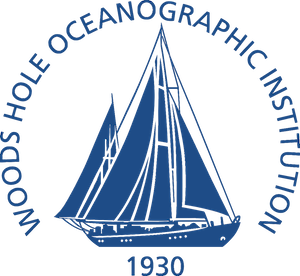
The Woods Hole Oceanographic Institution is a private, nonprofit research and higher education facility dedicated to the study of marine science and engineering.
Ellen Dissanayake, an American anthropologist and writer focusing on art and culture. She lives in Seattle, Washington, and is affiliated with the University of Washington.
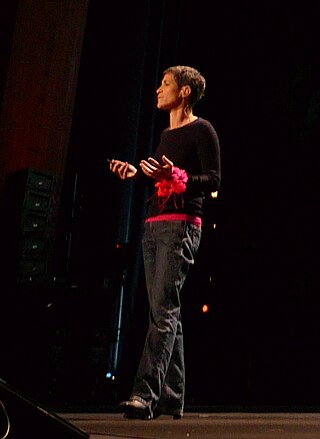
Margaret Wertheim is an Australian-born science writer, curator, and artist based in the United States. She is the author of books on the cultural history of physics, and has written about science, including for the New York Times, Los Angeles Times, Guardian, Aeon and Cabinet. Wertheim and her twin sister, Christine Wertheim, are co-founders of the For Figuring (IFF), a Los Angeles–based non-profit organization through which they create projects at the intersection of art, science and mathematics. Their IFF projects include their Crochet Coral Reef, which has been shown at the 2019 Venice Biennale, Hayward Gallery (London), Museum of Arts and Design (NYC), and the Smithsonian's National Museum of Natural History. For her work with public science engagement, Wertheim won the 2016 Klopsteg Memorial Award from the American Association of Physics Teachers and Australia's Scientia Medal (2017).
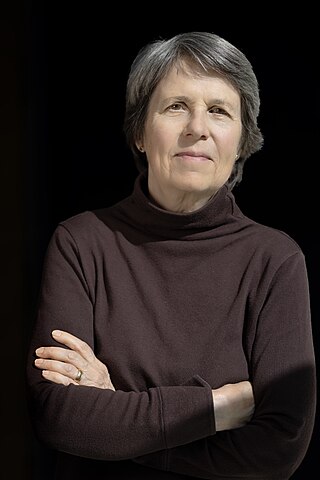
Sallie Watson "Penny" Chisholm is an American biological oceanographer at the Massachusetts Institute of Technology. She is an expert in the ecology and evolution of ocean microbes. Her research focuses particularly on the most abundant marine phytoplankton, Prochlorococcus, that she discovered in the 1980s with Rob Olson and other collaborators. She has a TED talk about their discovery and importance called "The tiny creature that secretly powers the planet".
Darwinian literary studies is a branch of literary criticism that studies literature in the context of evolution by means of natural selection, including gene-culture coevolution. It represents an emerging trend of neo-Darwinian thought in intellectual disciplines beyond those traditionally considered as evolutionary biology: evolutionary psychology, evolutionary anthropology, behavioral ecology, evolutionary developmental psychology, cognitive psychology, affective neuroscience, behavioural genetics, evolutionary epistemology, and other such disciplines.
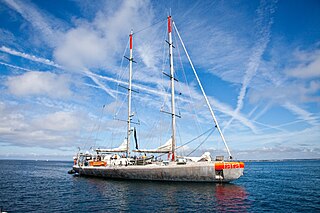
The Tara expedition is an oceanic research expedition.
María de los Ángeles Alvariño González, known as Ángeles Alvariño, was a Spanish fishery research biologist and oceanographer globally recognized as an authority in plankton biology. She was the first woman ever appointed as scientist aboard any British or Spanish exploration ship. She discovered 22 new species of marine animals and published over a hundred scientific books, essays, and articles. In her late career she studied the history of early marine scientific exploration.
Mary Marr "Polly" Platt was an American film producer, production designer and screenwriter. She was the first woman accepted into the Art Directors Guild, in 1971. In addition to her credited work, she was known as a mentor as well as an uncredited collaborator and networker. In the case of the latter, she is credited with contributing to the success of ex-husband and director Peter Bogdanovich's early films; mentoring then first-time director and writer Cameron Crowe, and discovering actors including Cybill Shepherd, Tatum O'Neal, Owen Wilson, Luke Wilson, and director Wes Anderson. Platt also suggested that director James L. Brooks meet artist and illustrator Matt Groening, sparking a collaboration from which the longest-running scripted prime-time series in American television history, The Simpsons, would be spun-off.

The Continuous Plankton Recorder (CPR) Survey is one of the longest running marine biological monitoring programmes in the world. Started in 1931 by Sir Alister Hardy and Sir Cyril Lucas, the Survey provides marine scientists and policy-makers with measures of plankton communities, coupled with ocean physical, biological and chemical observations, on a pan-oceanic scale. The Survey is a globally recognised leader on the impacts of environmental change on the health of our oceans.

Joseph Henrich is an American anthropologist and professor of human evolutionary biology at Harvard University. Before arriving at Harvard, Henrich was a professor of psychology and economics at the University of British Columbia. He is interested in the question of how humans evolved from "being a relatively unremarkable primate a few million years ago to the most successful species on the globe", and how culture shaped our species' genetic evolution.
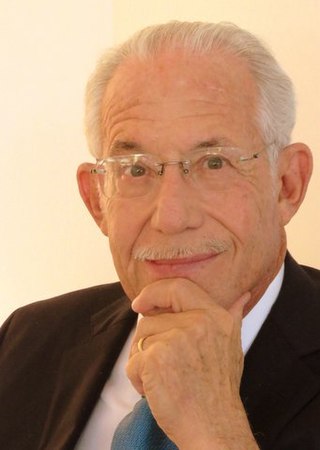
William A. Haseltine is an American scientist, businessman, author, and philanthropist. He is known for his groundbreaking work on HIV/AIDS and the human genome.

Eve Andree Laramee is an installation artist whose works explores four primary themes: legacy of the atomic age, history of science, environment and ecology, social conditions. Her interdisciplinary artworks operate at the confluence of art and science. Laramee currently lives in Brooklyn, New York, and Santa Fe, New Mexico. She is the founder and director of ART/MEDIA for a Nuclear Free Future. Laramee is Professor Emerita of Art at Pace University.

Marie Victoire Lebour was a British marine biologist known for her study of the life cycles of various marine animals. She published more than 175 works during her long career.
An Ecosystem of Excess is an art project by artist and researcher Pinar Yoldas. The project addresses a series of ecological problems such as man-made extreme environments, consumer capitalism, plastic pollution and threatened species in the age of the Anthropocene. Yoldas was awarded the Ernst Schering Foundation Arts & Culture Grant for her project, and An Ecosystem of Excess was premiered in Ernst Schering Project Space in Berlin in 2014.

Christina Maria Agapakis is a synthetic biologist, science writer. She is the former Creative Director of the biotechnology company Ginkgo Bioworks.
Pam Longobardi is an American contemporary artist and ecofeminist, currently living and working in Atlanta, Georgia. She is known internationally for sculptural works and installations created from plastic debris, primarily from marine and coastal environments, as a primary material. Much of her work includes community-based research, such as carbon or plastic audits, as well as collaborative art creation.
Collin Roesler is an American oceanographer. She is known for her work on optical oceanography, including research on harmful algal blooms in the Gulf of Maine and green icebergs.
Portland State University

Christine Figgener is a German marine conservation biologist, author, science communicator, and ocean advocate recognized for her work in sea turtle conservation, the fight against plastic pollution, and the empowerment of women in STEM. She is best known for documenting the removal of a plastic straw from a sea turtle's nose in a YouTube video that went viral in 2015. This video, which was featured in popular media outlets such as National Geographic, HuffPost, The New York Times, ABC News, and CNN, highlighted the dangers of plastic pollution on marine wildlife and was a catalyst for the global anti-straw movement that led to several straw bans by businesses such as Starbucks, Disney, and Alaska Airlines.
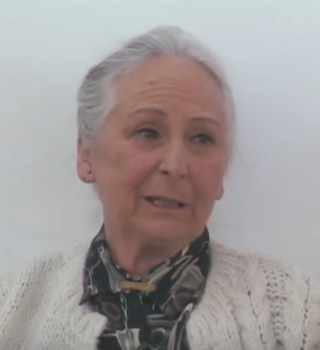
Marta Vannucci was a Brazilian biologist and professor whose main research in biological oceanography was focused on mangroves and plankton. Marta was the first woman to become a full member of the Brazilian Academy of Sciences and one of the precursors of oceanography in Brazil.















